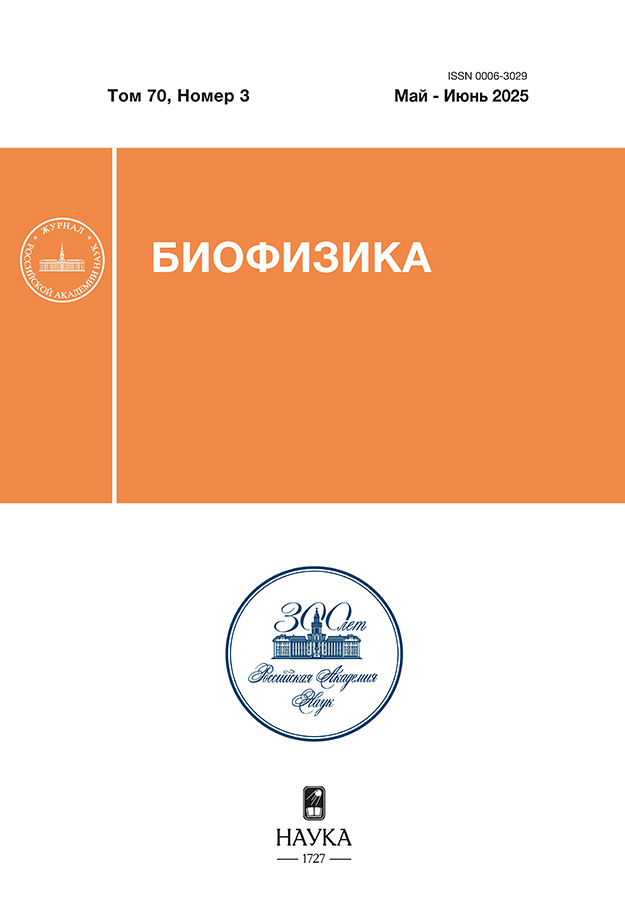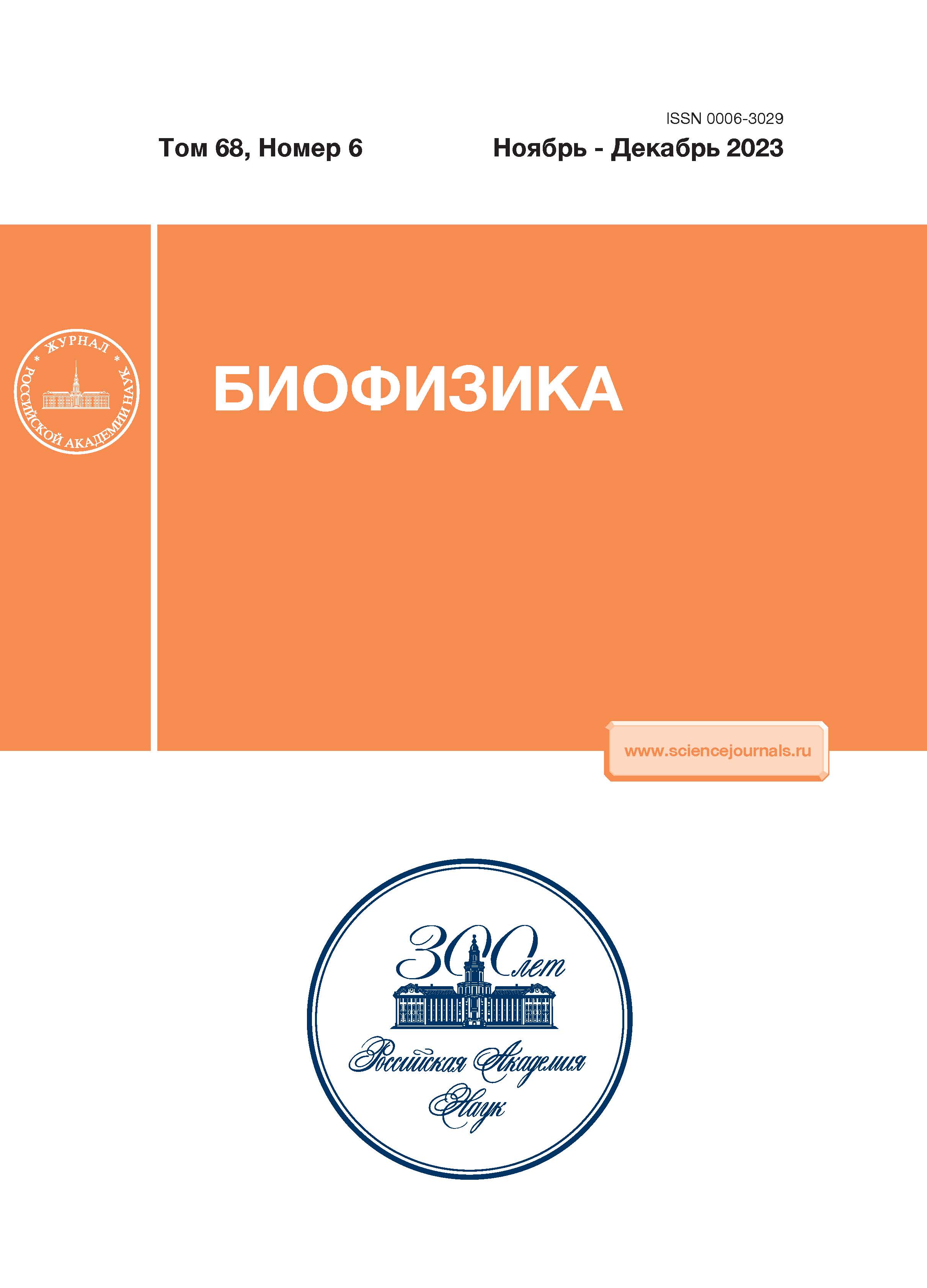A thermodynamic model for the formation of protein aggregates on a matrix
- Authors: Vasilenko E.O1,2, Kozin S.A1, Mitkevich V.A1, Buchelnikov A.S3, Nechipurenko Y.D1,3
-
Affiliations:
- Engelhardt Institute of Molecular Biology, Russian Academy of Sciences
- Moscow Institute of Physics and Technology
- Sevastopol State University
- Issue: Vol 68, No 6 (2023)
- Pages: 1128-1140
- Section: Articles
- URL: https://kld-journal.fedlab.ru/0006-3029/article/view/673231
- DOI: https://doi.org/10.31857/S0006302923060042
- EDN: https://elibrary.ru/RVOCJF
- ID: 673231
Cite item
Abstract
About the authors
E. O Vasilenko
Engelhardt Institute of Molecular Biology, Russian Academy of Sciences;Moscow Institute of Physics and Technology
Email: vasilenko.eo@phystech.edu
Moscow, Russia
S. A Kozin
Engelhardt Institute of Molecular Biology, Russian Academy of SciencesMoscow, Russia
V. A Mitkevich
Engelhardt Institute of Molecular Biology, Russian Academy of SciencesMoscow, Russia
A. S Buchelnikov
Sevastopol State University
Email: tolybas@rambler.ru
Sevastopol, Russia
Yu. D Nechipurenko
Engelhardt Institute of Molecular Biology, Russian Academy of Sciences;Sevastopol State University
Email: nech99@mail.ru
Moscow, Russia;Sevastopol, Russia
References
- A. M. Morris, M. A. Watzky, and R. G. Finke, Biochimica et Biophysica Acta - Proteins and Proteomics, 1794 (3), 375 (2009).
- R. J. Loureiro, et al., In Proc. of Int. Conf. on Multidisciplinary Sciences MOL2NET 2018, 4th edition (MD-PI, 2018), p. 1.
- R. B. Martin, Chem. Rev., 96 (8), 3043 (1996).
- V. P. Evstigneev, et al., J. Chem. Phys., 134 (19) (2011).
- A. S. Buchelnikov, V. P. Evstigneev, and M. P. Evstigneev, Chem. Phys., 421, 77 (2013).
- T. L. Hill, Thermodynamics of Small Systems (Courier Corp., 1994).
- S. Lifson, J. Chem. Phys., 40 (12), 3705 (1964).
- M. P. Heyn and R. Bretz, Biophys. Chem., 3 (1), 35 (1975).
- J. Spouge, Macromolecules, 16 (1), 121 (1983). doi: 10.1021/ma00235a024
- S. Brunauer, P. H. Emmett, and E. Teller, J. Am. Chem. Soc., 60 (2), 309 (1938).
- Z. L. Almeida, R. M. M. Brito, Molecules, 25 (5), 1195 (2020).
- W. F. Xue, S. W. Homans, and S. E. Radford, Prot. Engineering, Design & Selection, 22 (8), 489 (2009). doi: 10.1093/protein/gzp026
- J. Hinz, L. M. Gierasch, and Z. Ignatova, Biochemistry, 47 (14), 4196 (2008).
- W. F. Xue, S. W. Homans, and S. E. Radford, Proc. Natl. Acad. Sci. USA, 105 (26), 8926 (2008).
- W. F. Xue and S. E. Radford, Biophys J., 105 (12), 2811 (2013).
- P. J. Flory, J. Am. Chem. Soc., 58 (10), 1877 (1936).
- G. W. Platt, et al., J. Mol. Biol., 378 (1), 251 (2008).
- M. I. Ivanova, et al., Biophys. Chem., 269, 106507 (2021).
- W. Zheng, M. Y. Tsai, and P. G. Wolynes, J. Am. Chem. Soc., 139 (46), 16666 (2017).
- S. A. Kozin, et al., Biochemistry (Moscow), 83, 1057 (2018).
- В. В. Аристов и др., Применение понятий энтропии и информации для исследования биосистем: от молекул до организмов (2023).
- L. M. Smith and S. M. Strittmatter, Cold Spring Harbor Perspectives in Medicine, 7 (5), a024075 (2017).
- V. A. Mitkevich, et al., Aging and Disease, 14 (2), 309 (2023).
- V. V. Aristov, A. S. Buchelnikov, and Y. D. Nechipurenko, Entropy, 24 (2), 172 (2022).
- S. A. Kozin, Biochemistry (Moscow), 88 (Suppl. 1), S75 (2023). doi: 10.1134/S0006297923140055
- Y. Kong, J. Chem. Phys., 135 (15) (2011).
- Ю. Д. Нечипуренко, Анализ связывания биологически активных соединений с нуклеиновыми кислотами (Ин-т компл. исслед., Москва - Ижевск, 2015).
Supplementary files











